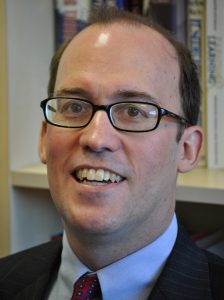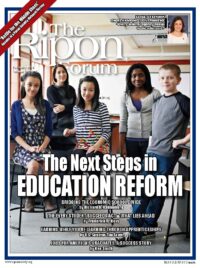 The nineteenth century educator Horace Mann, the founding father of American public education, famously called public schools the “great equalizer.” They would give all children, no matter their background, the chance to succeed. But in order to do so, Mann believed, schools had to be “common schools,” educating rich and poor under one roof. The presence of affluent and high-achieving students raises the standard of achievement, he argued, and “the mass will rise again and reach it. Hence the removal of the most forward scholars from a school is not a small misfortune.”
The nineteenth century educator Horace Mann, the founding father of American public education, famously called public schools the “great equalizer.” They would give all children, no matter their background, the chance to succeed. But in order to do so, Mann believed, schools had to be “common schools,” educating rich and poor under one roof. The presence of affluent and high-achieving students raises the standard of achievement, he argued, and “the mass will rise again and reach it. Hence the removal of the most forward scholars from a school is not a small misfortune.”
For centuries, Americans violated the common school ideal when laws segregated schools by race. The remnants of that stain remain, but in more recent years, a new pattern has emerged. As Harvard political scientist Robert Putnam notes in his book, Our Kids: The American Dream in Crisis, rising residential segregation by class “has been translated into de facto class-based school segregation.” This is troublesome, Putnam writes, because extensive evidence suggests, “whom you go to school with matters a lot.”
Private schools, which have been a longstanding part of the American landscape, are today contributing to the country’s economic balkanization. As wealthy Americans retreat from the public sphere – using private security services in gated communities – many are also using private education for their children.
In 2012, private school parents were almost twice as likely to come from relatively wealthy families as public school parents. According to the U.S. Census Bureau, 60 percent of private school parents made more than $75,000 a year (the Bureau’s highest income bracket), compared to 32 percent of public school parents.
The flight of wealthy students from public to private schools is at once a constitutional right of families and a cause for unease.
The flight of wealthy students from public to private schools is at once a constitutional right of families and a cause for unease, given evidence that public schools are stronger when they educate a broad cross section of students. Fourth grade low-income students who have the chance to attend more affluent public schools, for example, are as much as two years ahead of low-income students in high-poverty schools on the National Assessment for Educational Progress in mathematics.
To be clear, it would be wrong to try to rob families of their right to spend their own money to attend a private school of their choosing. In the 1925 case of Pierce v. Society of Sisters, the U.S. Supreme Court held that parents have the right to choose to send their children to private school.
But public schools should make strong efforts to draw students from all walks of life back into the public schools. In Cambridge, Massachusetts, for example, school officials turned every traditional public school into a magnet school – with special themes or pedagogical approaches to attract families. Choices are honored with an eye to ensuring that all the schools have a strong mix of low income and more affluent students. When Cambridge instituted its all-choice, all-magnet system, it was able to draw a substantial number of students who had previously used private school into the public school system.
Public schools that have a healthy blend of middle-class and lower-income students provide much stronger opportunities for all students. As Acting U.S. Secretary of Education John B. King, Jr. noted in a recent address commemorating Martin Luther King Jr.’s birthday, “Research shows that one of the best things we can do for all children — black or white, rich or poor — is give them a chance to attend strong, socioeconomically diverse schools.”
When Cambridge instituted its all-choice, all-magnet system, it was able to draw a substantial number of students who had previously used private school into the public school system.
As compared to high-poverty schools, economically-mixed schools provide an environment in which peers are, on average, more academically engaged, parents are in a position to volunteer in class, and strong teachers have high expectations.
Wealthy and white students benefit as well. For the first time in American history, a majority of public school pupils today are students of color. As our nation grows increasingly diverse, integrated public schools help students learn a valuable skill – how to get along with students whose backgrounds are different than their own.
Integrated schools also strengthen our nation as a whole by providing what the American Federation of Teachers president Albert Shanker called the “glue that bas held this country together.” Shanker wrote: “A Martian who happened to be visiting Earth soon after the United States was founded would not have given this country much chance of surviving. He would have predicted that this new nation, whose inhabitants were of different races, who spoke different languages, and who followed different religions, wouldn’t remain one nation for long. They would end up fighting and killing each other…. But that didn’t happen. Instead, we became a wealthy and powerful nation–the freest the world has ever known… Public schools played a big role in holding our nation together.”
Americans will always have the right to send their children to private schools. But we will all benefit when we strengthen the public schools to the point that increasing numbers will want to choose the public schools that have served our country so well.
Richard D. Kahlenberg, a senior fellow at The Century Foundation, is the author of All Together Now: Creating Middle-Class Schools through Public School Choice (Brookings Press, 2001), and the editor of The Future of School Integration: Socioeconomic Diversity as an Education Reform Strategy (Century Foundation Press, 2012).




